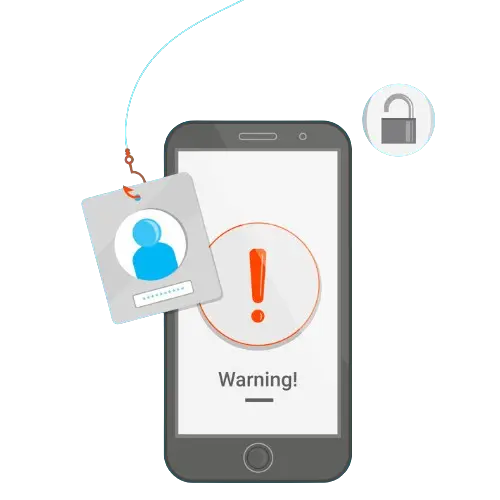Cybersecurity Incident Response and Private Proxies
In cybersecurity, staying one step ahead of potential threats is not just a goal but a necessity.
Faced with escalating challenges, organizations are compelled to adopt a proactive approach in fortifying their digital defenses.

Key Components of an Effective Incident Response Plan
1. Preparation
Preparation is the proactive cornerstone of security incident response efforts. Organizations need to conduct a thorough risk assessment to help them identify potential vulnerabilities and critical assets. This involves categorizing data sensitivity, evaluating system dependencies, and understanding potential cyber threat vectors.
A well-prepared organization establishes clear communication channels, roles, and responsibilities within the incident response team members. Regular training sessions, tabletop exercises, and simulations are vital to ensure that the security team is well-versed in response procedures.
2. Detection
The detection phase involves deploying advanced tools and technologies to identify potential computer security incidents promptly. Intrusion detection systems, SIEM solutions, and anomaly detection mechanisms play a crucial role in monitoring network traffic and system behavior. Timely detection empowers organizations to initiate a rapid response. It minimizes the dwell time of attackers within the network.
3. Containment
Containment is the swift and precise isolation of the affected systems to prevent the lateral movement of the attack. This involves disconnecting compromised devices, restricting network access, and implementing temporary measures to halt the progression of the incident. Effective containment limits the impact and preserves the integrity of critical systems.
4. Eradication
This phase of incident response delves into the root cause of the incident. After containment, organizations must conduct a detailed forensic analysis to identify how the breach occurred and eliminate any lingering threats. This phase involves removing malicious code, closing vulnerabilities, and implementing patches or updates to fortify the system against similar cyber attacks in the future.
5. Recovery
The recovery phase focuses on restoring normal operations and ensuring business continuity. This involves data restoration, system reconfiguration, and a comprehensive post-incident analysis. Organizations must refine and update their incident response plan based on lessons learned.
Proxies in Proactive Cyber Threat Detection
In the context of incident response, private proxies add a layer of anonymity and obfuscation. They make it more challenging for malicious actors to trace and target an organization’s online activities.
Private proxies also facilitate controlled and secure monitoring of online activities. Incident responders can use them to observe and analyze suspicious websites, potential phishing domains, or other malicious entities without exposing their organization to unnecessary risks.
Additionally, they enable organizations to establish an early warning system by monitoring and intercepting potentially malicious traffic. This proactive approach aids in identifying and neutralizing threats before they escalate.
Proxies in Proactive Security Incident Response
Proxies play a crucial role in incident response. Like any technology, they come with their own set of challenges. Understanding these challenges and implementing best practices is essential for leveraging proxies effectively in incident response.
- Proxies can introduce latency as they intercept and redirect traffic. This latency can potentially impact the performance of critical systems. Careful selection of high-performance proxy servers and optimizing network configurations can help mitigate these issues.
- Relying on a single proxy as a central point for traffic can create a single point of failure. It makes the organization vulnerable if the proxy becomes unavailable. Implement redundancy by using multiple proxies or employing failover mechanisms to ensure continuous operation.
- Proxies may face difficulties in handling encrypted traffic. This can limit their ability to inspect and analyze secure communications. Employ proxies with SSL/TLS inspection capabilities or implement additional measures like endpoint security solutions to address encrypted traffic challenges.
- In some cases, proxies may not provide sufficient visibility into certain types of traffic. This can limit the effectiveness of incident detection and response. Choose proxies that offer comprehensive logging and reporting capabilities. Augment proxy data with information from other security tools for a more holistic view.
- Tailor proxy configurations based on the specific incident types and threat landscapes relevant to the organization. Customization ensures that proxies are aligned with the unique security needs of the environment.
- Conduct regular testing and evaluation of proxy infrastructure to identify and address potential vulnerabilities. Include proxies in tabletop exercises and simulations to validate their effectiveness in real-world scenarios.
- Provide continuous training for incident response teams on the capabilities and limitations of proxies. Ensure that responders are equipped to make informed decisions when utilizing proxies in various incident scenarios.
Conclusion
As organizations confront the escalating threat landscape, a proactive approach fortified by private proxies becomes a linchpin for safeguarding digital assets and maintaining operational continuity.
By comprehensively understanding and embracing the synergy between incident response and private proxies, businesses can navigate the digital frontier with confidence, resilience, and heightened security.
Related Articles
How to Bypass IP Bans
IP ban is a security measure used by websites to block access from specific IP addresses. This mechanism is often employed to prevent malicious activities such as spamming, hacking attempts, and excessive web scraping. When an IP address is banned, the user or device associated with that address is restricted from accessing the website.
Geo-Targeting and IP Rotation with Private Proxies
Geotargeting involves tailoring online content to specific geographic regions. It allow businesses to reach local audiences and individuals to access regional content. The regular switching of IP addresses further enhances online anonymity and security when coupled with private proxies.
Securing Social Media Activities with Private Proxies
Social media platforms are propelled by sophisticated algorithms and user analytics. They extensively engage in data tracking. Every click, like, and share contributes to the creation of an intricate user profile. 79% of social media users are concerned about their privacy on social media.



